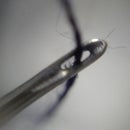Introduction: Understanding Superfluids!!!
Hi Guys! I'm back. I couldn't resist but to post another instructable on an amazingly interesting topic of science before my exams. And this time, It's on SUPERFLUIDS. So let's get started...
Step 1: THE BASICS...
As you read in my last instructable on 4th and 5th State of matter, we can liquefy atmospheric gases by reducing temperature and applying pressure. Let's put some more light on that.
Intermolecular forces of atoms depends on their temperature. When the atoms are cooled, their intermolecular forces increase and when the atoms are heated, their intermolecular forces decrease.
Today we will learn about what happens to atoms and their intermolecular forces when they are cooled (Heating effect is for some other instructable. Let me know in the comments if you want that).
Take water vapour for example. When it is cooled, the intermolecular forces of atoms increase, hence, causing the atoms to attract each other and form water. Now, if we cool water, the intermolecular forces will increase further, causing the atoms to form ice.
All this happen so easily in water because atoms of water are meant to stick together. But, the same is not in case of atmospheric gases. In their case, we need to not only decrease temperature but also increase pressure to liquefy gases. Cooling increases the intermolecular forces of the atoms and pressure forces the atoms you come and stick together. Hence, the gases get liquefied. The gases will stay liquefied till the temperature is low. Once, the temperature starts increasing, the intermolecular forces will decrease and hence, the liquefied atmospheric gases will become normal atmospheric gases again.
Step 2: SUPERFLUIDS!!!
Well, till now, you might have guessed that liquefied atmospheric gases like oxygen and helium are called superfluids. What's so special about superfluids you ask?? Well, for starters, they flow with zero viscosity and therefore, flow without the loss of kinetic energy. This means that if you swirl a vortex in a cup full of a superfluid, the vortex will keep spinning forever until it is stopped. Cool, isn't it??(See 2nd picture....)
Superfluidity is related to Bose Einstein condensation(Read my previous instructable for more on that topic...), but neither is a specific type of the other: not all Bose-Einstein condensates can be regarded as superfluids, and not all superfluids are Bose–Einstein condensates. Superfluidity is found in astrophysics, high-energy physics, and theories of quantum gravity.
Superfluidity was originally discovered in liquid helium, by Pyotr Kapitsa and John F. Allen. It has since been described through phenomenology and microscopic theories.
In the first picture given above, there is a cup suspended over another shallow bowl and both, the cup and the bowl are full of liquid helium in superfluid phase. As long as it remains superfluid, it creeps up the wall of the cup as a Rollin film(A Rollin film, named after Bernard V. Rollin, is a 30 nm-thick liquid film of helium in the helium II state). It comes down on the outside, forming a drop at the base of the cup which will fall into the liquid below. Another drop will form....and so on...until the cup is empty.....
In simple words, creeping along the walls is a property of superfluids. See 3rd and 4th figure for understanding it better :) :)Creepy, isn't it??
Source: My brain and the knowledge inside it.
(Again, IT'S NOT A WEBSITE PEOPLE !!!!!!!)
Step 3: Any Questions??
So, these were the basic properties of superfluids. If you have trouble understanding anything, or want to request an instructable on any topic in science or quantum physics, feel free to do so. I'll be sure to answer your query and if the topic you suggest holds some potential, I'll be sure to post an instructable on it. Also, please let me know of how you felt about this Instructable. If you find a mistake anywhere in this Instructables , kindly notify me of it, I will be sure to correct it.
Also, being a ninth grader, my exams are starting next week. So, my next instructable will be posted about two weeks later on an even better topic. Stay tuned for the same. I'll be sure to answer any queries in the meantime. Also, kindly help me spread my instructables page...I would be greatful to you if you do so :) :)
Don't forget to follow me :) :)













